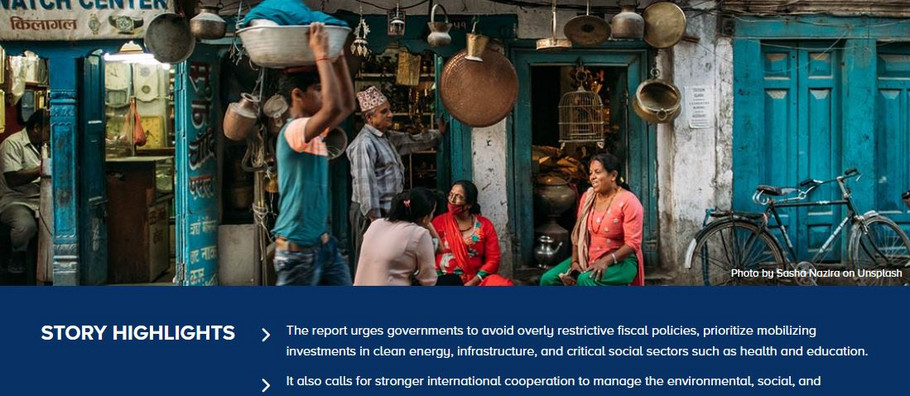
While the global economy has been resilient in the face of “mutually reinforcing shocks,” global growth in 2025 is projected to remain unchanged from 2024.
At 2.8%, it also remains below the pre-pandemic average of 3.2%. This is according to the 2025 edition of the UN flagship report, World Economic Situation and Prospects (WESP), which calls for “bold” multilateral action to tackle the interconnected crises of debt, inequality, and climate change.
While the report acknowledges lower inflation and monetary easing in many economies that could “provide a modest boost to global economic activity in 2025,” it highlights that weak investment, slow productivity growth, and high debt levels continue to act as barriers. Additional risks include geopolitical conflicts, increasing trade tensions, and elevated borrowing costs in many parts of the world – all contributing to “lingering uncertainty,” particularly in low-income countries (LICs) and other vulnerable countries, where fragile growth further jeopardizes progress towards the SDGs.
Regional prospects diverge significantly, according to the report. Growth in the US is projected to slow from 2.8% in 2024 to 1.9% in 2025. A modest recovery is forecast for Europe where gross domestic product (GDP) growth is expected to increase from 0.9% in 2024 to 1.3% in 2025.
East Asia is expected to grow 4.7% in 2025, largely driven by China’s projected steady growth of 4.8%. With GDP growth projected at 5.7% in 2025, South Asia will remain the fastest growing region, with India alone growing 6.6%. A modest rise in growth is expected for Africa, from 3.4% in 2024 to 3.7% in 2025, driven by recoveries in major economies such as Egypt, Nigeria, and South Africa. At the same time, the report recognized that conflicts, rising debt servicing costs, lack of employment opportunities, and worsening climate change impacts might dampen Africa’s prospects.
The report projects global trade to grow 3.2% in 2025, while global inflation is expected to decline from 4% in 2024 to 3.4% in 2025. However, in many developing countries, inflation, including food inflation, is expected to remain elevated. One in five developing countries is projected to face double-digit inflation in 2025.
The report highlights the potential of critical minerals, such as lithium, cobalt, and rare earths, to drive the energy transition while accelerating progress towards the SDGs. While the report acknowledges the opportunities resource-rich developing countries have to boost growth, create jobs, and increase public revenues for investment in sustainable development, it also flags poor governance, unsafe labor practices, environmental degradation, and overreliance on volatile commodity markets among other risks that could exacerbate inequalities and harm ecosystems.
The report urges governments to avoid overly restrictive fiscal policies, prioritize mobilizing investments in clean energy, infrastructure, and critical social sectors such as health and education. It also calls for stronger international cooperation to manage the environmental, social, and economic risks associated with critical minerals.
Share: